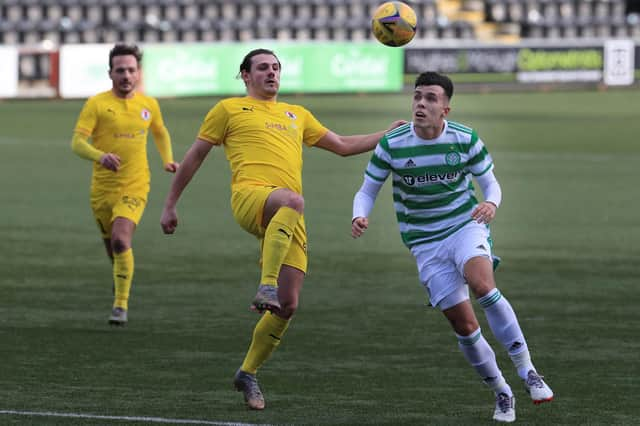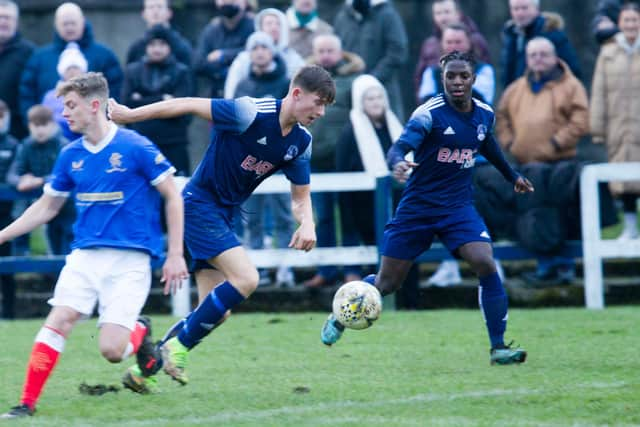Lowland League relegation rules vote and Old Firm B team plans explained


What was decided?
The 16 member clubs at tier five of the Scottish football pyramid met on Monday night to vote on proposed changes to relegation rules for next season.
They were presented with three different options to increase the number of Lowland League teams relegated to the feeder leagues below. But the member clubs voted for no change.
So what is the status quo?
Advertisement
Hide AdAdvertisement
Hide AdOnly the bottom club is generally relegated and, in some circumstances, can still avoid the drop altogether. The second bottom team can also go down to keep the number of clubs at 16. That will happen this season, for example, if champions Bonnyrigg Rose lose to the Highland League winners, who then beat League 2 bottom club Cowdenbeath in the pyramid play-off final.
Bonnyrigg would stay in the Lowland League and Cowdenbeath would drop down too. In that scenario, the Lowland League bottom two will go down.
The status quo, however, also means it is possible for no teams to be relegated. That would happen if, for example, Bonnyrigg Rose went up and relegated Elgin City to the Highland League, leaving the Lowland League with 15 clubs. If that were to happen, the bottom club in the Lowland League stays up and a tier 6 club is promoted to get to 16 clubs. But one down is generally a more likely outcome.


What were the new options?
Three new relegation options were on the table on Monday night: a minimum of two relegation places; two-to-three clubs to go down; and an ambitious three-down-three-up proposal involving the three feeder leagues at tier six below.
How did the vote work?
Advertisement
Hide AdAdvertisement
Hide AdBefore exploring the three new options, member clubs were first asked to vote for change or the status quo. They voted 9-7 in favour of the status quo in a secret ballot.
We know Bonnyrigg Rose voted for change because treasurer Brendan Parkinson immediately announced his resignation from the Lowland League board as a result of the outcome.
Most clubs, however, are keeping their cards close to their chests.
What does it mean for the feeder leagues?
The East of Scotland, West of Scotland and South of Scotland leagues at tier six will continue to battle it out for just one promotion slot between them.
Advertisement
Hide AdAdvertisement
Hide AdLike this season, if all three champions have the correct licence they contest a three-way play-off for one promotion place to the Lowland League.
Why is the decision hypocrisy?
Some Lowland League clubs have been critical of the SPFL members for refusing to vote for automatic relegation for the bottom club in League 2 which would make the pyramid system more fluid.
Now, the league is being accused of hypocrisy after failing to increase the number of relegation slots in their own league when they had the chance.
Is that fair criticism?
Yes and no. The Lowland League vote was close, so it’s unfair to accuse every club of hypocrisy. After all, seven clubs voted for more relegation.
Advertisement
Hide AdAdvertisement
Hide AdIt’s a secret ballot, so we can’t know for sure but the clubs further down the Lowland League table are more likely to have voted for no change. They had potentially more to lose.
The clubs higher up who think they could win the Lowland League and go up are more likely to have voted in favour of more relegation, thereby putting pressure on the SPFL to follow suit.
Of course, lump all the members together and it becomes easier to label the whole league as hypocritical.
Turkeys not voting for Christmas?
You could say that, yes. Some say it is a chicken-and-egg scenario, but turkeys is more accurate.
Advertisement
Hide AdAdvertisement
Hide AdSome clubs are understood to be privately justifying their decision to vote for the status quo on the basis that there is no change in League 2 either.
They claim that more relegation slots need to be agreed in both tiers simultaneously. But, like the SPFL clubs above them in League 2, clubs generally always act in their own best interests.
With big clubs now stacking up below them in the East and West of Scotland League, many Lowland League teams fear they would never return if relegated to tier six.
Who will go up this season?
Linlithgow Rose, Penicuik Athletic and Tranent are in a three-way East of Scotland title chase, with Pollok, Auchinleck Talbot and Darvel battling it out for the West of Scotland title this season. St Cuthbert Wanderers are favourites to win the South of Scotland League.
Advertisement
Hide AdAdvertisement
Hide AdA three-way play-off between the East, West and South champions (as long as they all have an SFA license) will determine who goes up into the Lowland League this season. The play-off mechanism will remain in place next season too.
Who will go down this season?
Vale of Leithen, who have just five points from 29 games, need at least seven points from their final five matches to have any chance of staying up.
It means the Innerleithen club will almost certainly be relegated from the Lowland League this season.
Gretna, six points better off, will finish second bottom and could also go down in the scenario explained above (if champions Bonnyrigg don’t achieve promotion and Cowdenbeath come down).
Advertisement
Hide AdAdvertisement
Hide AdVale can still avoid the drop even if they finish bottom – but only if Elgin are relegated to the Highland League and Bonnyrigg go up. Hope you are keeping up.
Where do the Old Firm B teams fit in?
Vale are propping up an 18-team league this season, with Rangers and Celtic having paid £25,000 each to play as guests in a one-season arrangement.
That came about after a Covid-curtailed 2020/21 meant there were no candidates for promotion into the Lowland League from below.
Both Old Firm colts teams are in the top four this season. Results against them do count but they can’t be promoted or relegated.
Are the Old Firm colts staying in the league?
Advertisement
Hide AdAdvertisement
Hide AdBoth halves of the Old Firm indicated at the meeting that they would like to stay in the Lowland League next season. Hearts have also expressed an interest.
However, more detailed discussions about the substance of a longer-term arrangement and the tightening up of rules would be required before any vote takes place.
With no firm proposals in place yet, any potential vote is not expected any time soon.
What is their case for remaining?
The Old Firm initially claimed they would attracted bigger crowds. While that is true, the general increase in attendances is probably not quite as big as anticipated.
Advertisement
Hide AdAdvertisement
Hide AdIt was hoped they would raise the profile and attract league sponsorship, but the jury is out on that one too. A new league sponsor has only recently been announced from elsewhere.
Lowland League coaches and players players have certainly relished the challenge of taking on some of the best up-and-coming young talents in the country.
The Old Firm have helped raise the standard right across the league.
Is it all about money?
Despite suggestions that the Old Firm ‘bought’ their way in, the combined £50,000 entry fee isn’t thought to be the major factor for members.
Advertisement
Hide AdAdvertisement
Hide AdTrue, it all helps. But the money goes to the league rather than the member clubs themselves and £50,000 between 16 clubs is not a game-changer.
What would need to change?
If they are to stay, member clubs will want to tighten up rules on fixture rescheduling and player eligibility.
Both Rangers and Celtic have had games moved to fit in with other commitments – often disrupting member clubs.
Their team line-ups have also changed substantially from week to week leading to accusations that it undermines sporting integrity.
What is the problem?
Advertisement
Hide AdAdvertisement
Hide AdIt was agreed when the arrangement was put in place that players who made five or more first-team appearances shouldn’t play in the Lowland League again.
There was also supposed to be a squad limit in place for each colts team of 22 players for the season, with a maximum age of U-20 plus one U-21 outfield and one U-21 goalkeeper.
But the updated Lowland League rules took so long to be signed off by the Scottish FA – well after the season had started – that the guidelines could never be properly tested or enforced.
What about Hearts?
Hearts have expressed an interest in entering a B team next season.
Advertisement
Hide AdAdvertisement
Hide AdThat would make it complicated for member clubs if it comes to another vote. Admitting two guest teams would be far easier than three. The league rules this season allow for only two ‘guest’ clubs.
